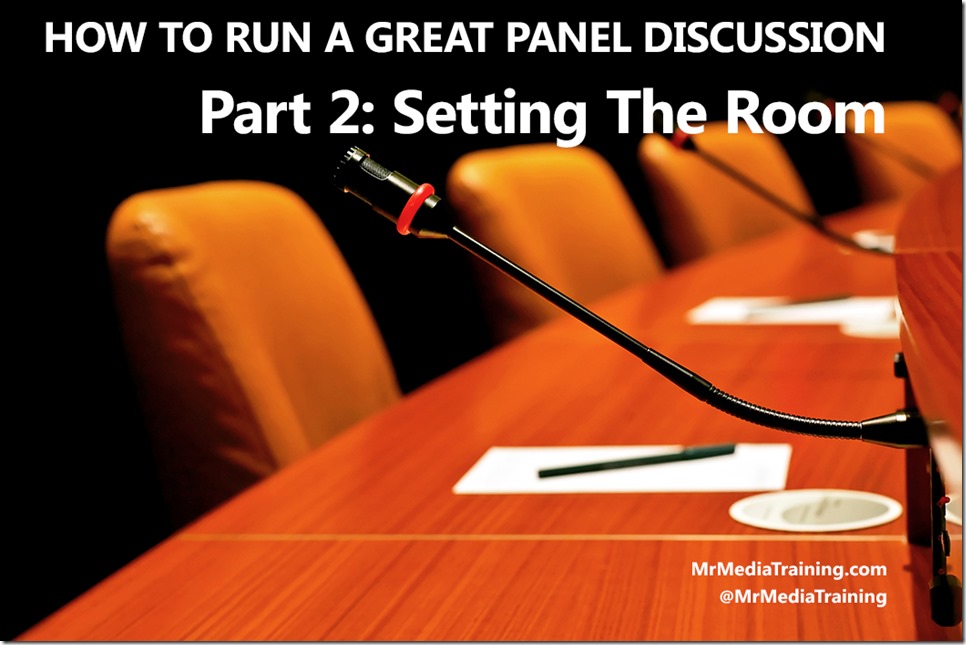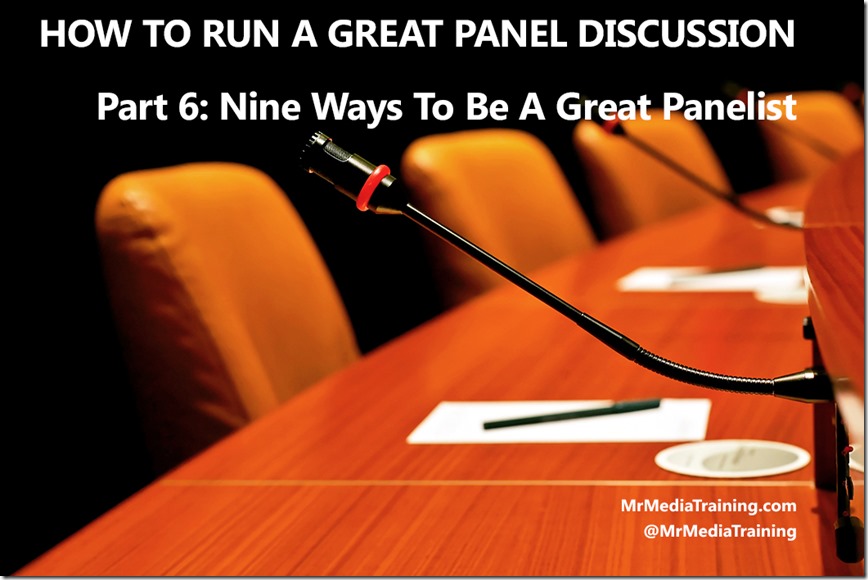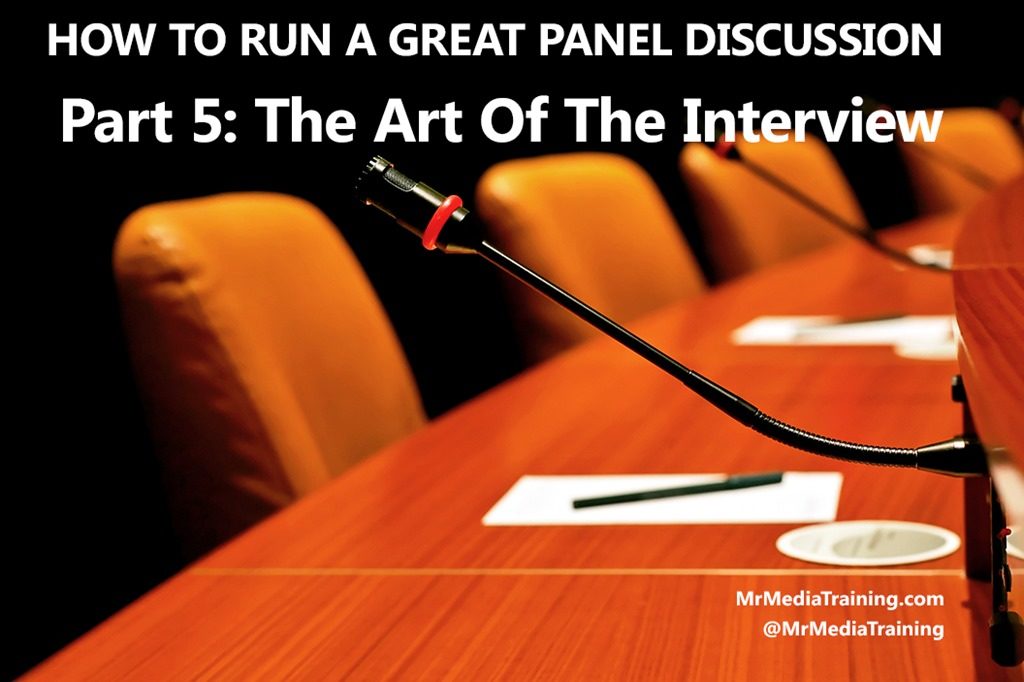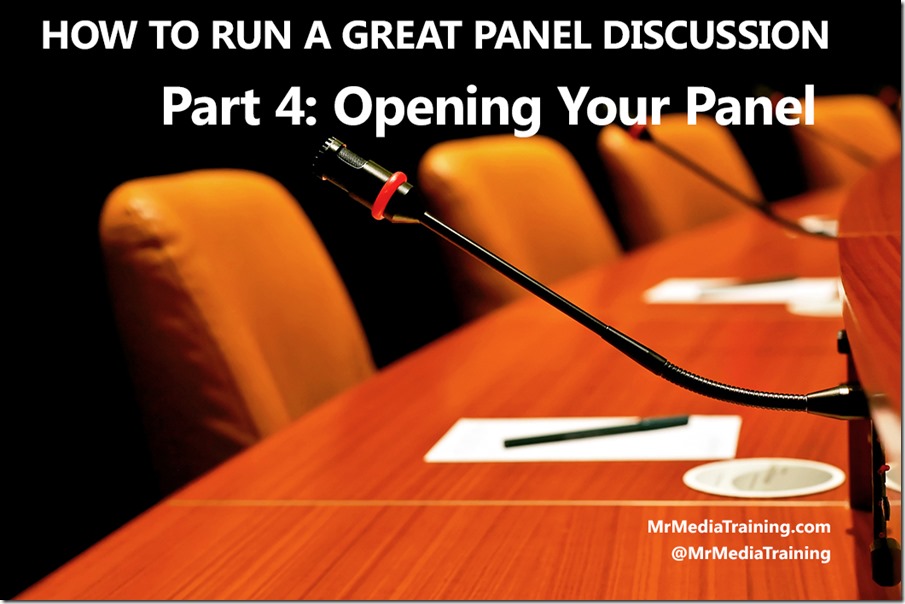Great Panel Discussions: The Right Way To Set The Room
This is the second post of a six-part series that will teach you how to plan and deliver outstanding panel presentations. Click here to see all six parts.
The physical environment plays an important role in the success of your panel — and making a few key adjustments to the usual arrangement has an outsize impact.
You’ve probably seen the typical panel setup: one long table with several chairs, a desk microphone for each panelist resting atop the table, and a moderator either seated among the panelists or standing behind a lectern next to the table.
That popular format — which can still be found at many corporate, scientific, and academic conferences — isn’t conducive to lively conversation. The panelists can’t easily see one another without twisting their bodies, are forced to hunch over the table to speak into their microphones, and are separated physically from the audience by a bulky table.
The unnecessary formality creates a stuffiness more associated with a board meeting than a friendly meal.
A Modern Panel Setup
Fortunately, the trend has shifted away from that “old school” format toward a more accessible one. Many modern conferences, which strive to create a more welcoming feel, have eliminated the long table altogether. In its place are chairs — either the kinds used for conference seating or, even better, comfortable plush ones similar to those found in high-end living rooms or on morning television programs. Some event spaces use high stools as an alternative, preferably ones with a back.
Instead of setting chairs or stools in a single row, orient them in a gentle U-shape — somewhere between a straight line and a semi-circle. If you’re moderating the panel, reserve an end seat, which will allow you to see the full panel in one eye sweep and avoid missing non-verbal reactions or cues from your panelists.
Place a coffee table in front of the chairs, on which the moderator and panelists can rest notes and glasses of water. If using stools, you can set small high tables between every two stools. Each panelist should be wired in advance with his or her own wireless lavaliere microphone.

This format makes it difficult for panelists to interact with one another. No wonder this man has a headache.
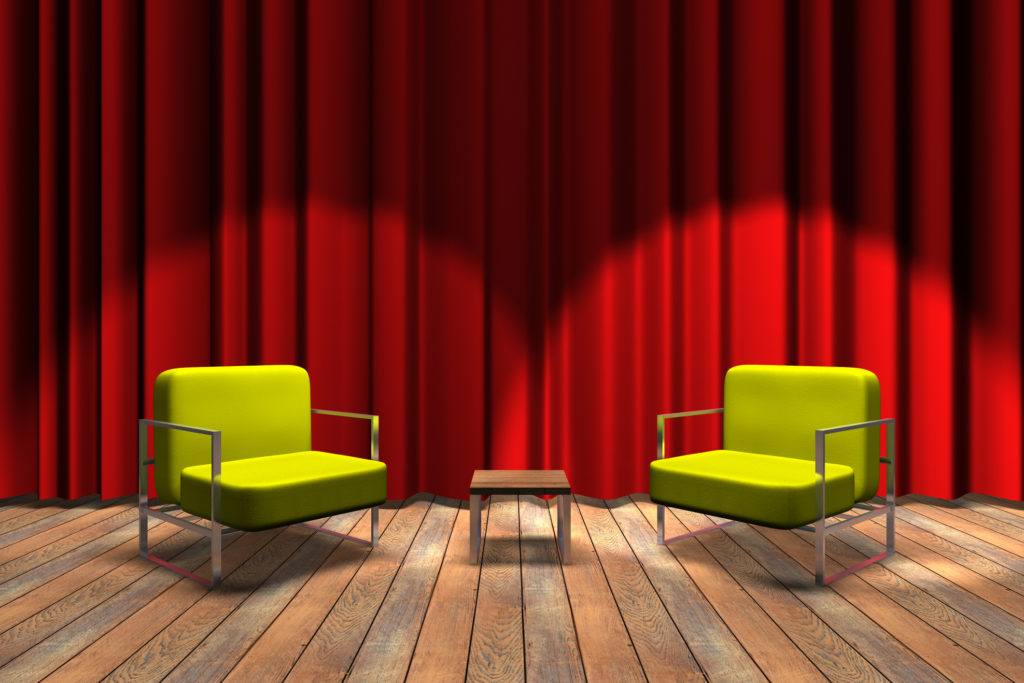
This setup, with angled comfortable chairs and a small table in between, is conducive to better conversation.
Plan a way to keep track of time. You can position a clock or timer in front of you or assign a timekeeper to flash hand signals or cue cards at key intervals, such as when it’s time to take audience questions or when you have five minutes remaining.
I’ve found that most event planners, hotels, and conference centers are receptive to this recommended setup — but it’s essential to communicate your requests as early as possible, perhaps by even drawing a rough schematic.
If you just say “panel” without offering additional details, they’ll likely default to the “old school” setup.
See all six parts in this series, in which you’ll learn how to plan a panel, set up the room, ask riveting questions, engage with the audience in unexpected ways, and much more!
